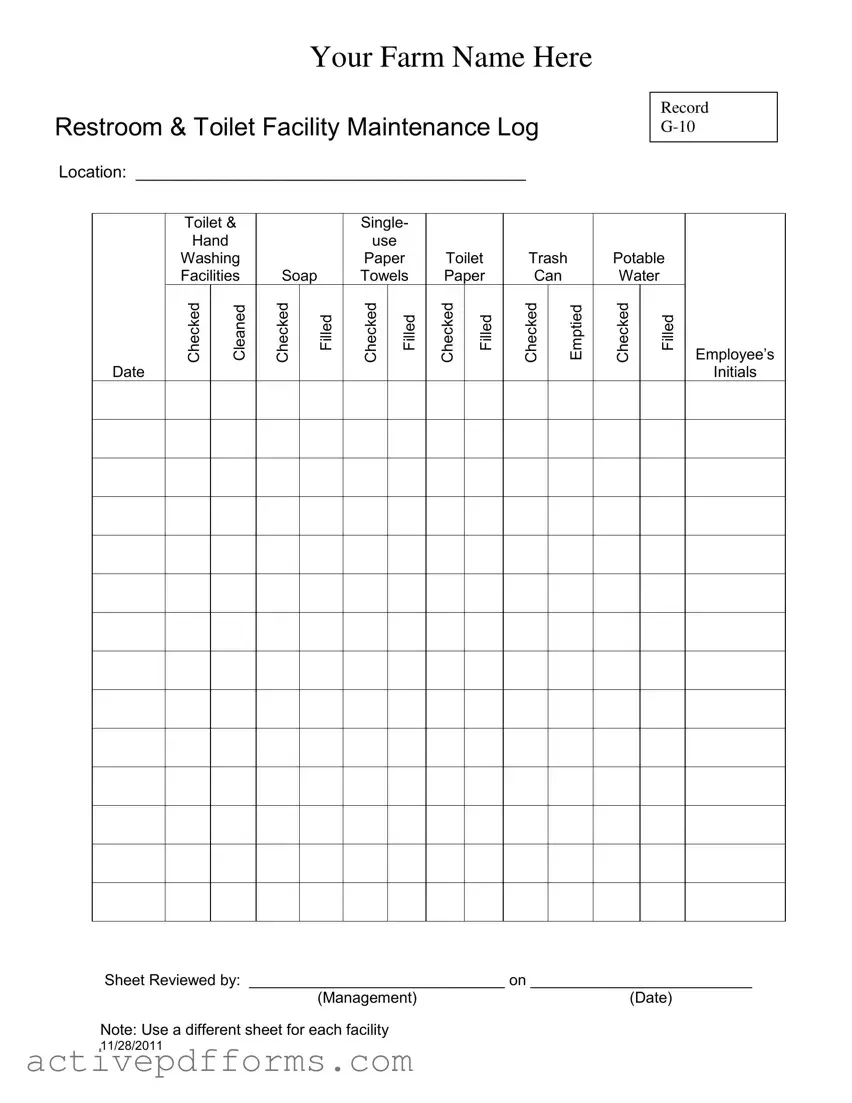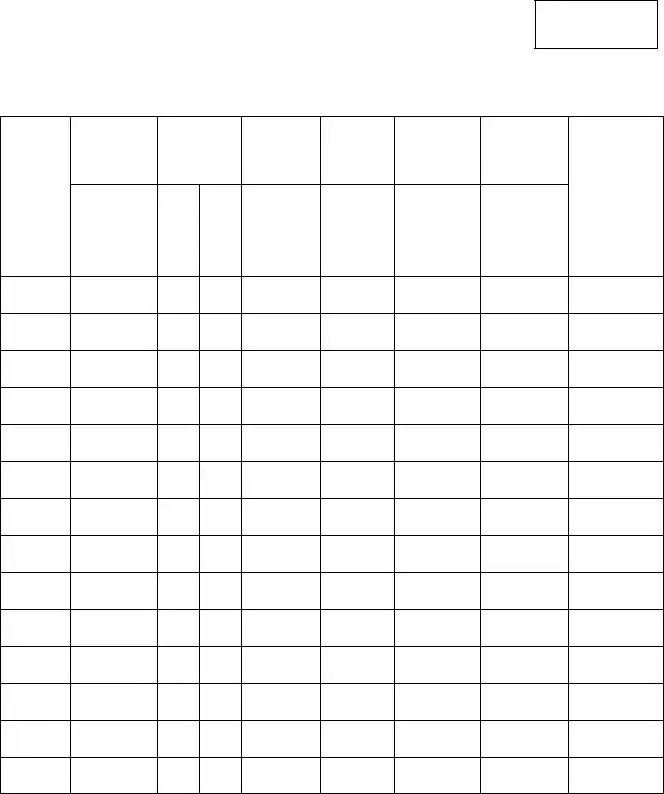In the intricate web of daily operations within the agricultural sector, the simplicity and structure provided by tools such as the Bathroom Cleaning Log Sheet form can often be overlooked in their significance. This document serves as a meticulous record for the maintenance of restroom and toilet facilities at any farming location, ensuring that all aspects of hygiene and supply are consistently managed to meet both health standards and employee needs. As indicated within the form, it outlines a comprehensive checklist covering the cleaning and restocking of toilets, handwashing facilities, soap, single-use paper towels, toilet paper, trash cans, and potable water. Each entry is also endorsed by the initials of the responsible employee, providing a clear accountability trail. Further, the importance of managerial oversight is underscored through a section dedicated to review by management, complete with signatures and dates, reinforcing the procedural integrity of this hygiene maintenance practice. The direction to utilize a separate sheet for each facility underlines the form's emphasis on organization and precision in maintaining cleanliness standards across different areas. Initiated on November 28, 2011, this document reflects an ongoing commitment to health, safety, and operational efficiency within the farm's infrastructure.

